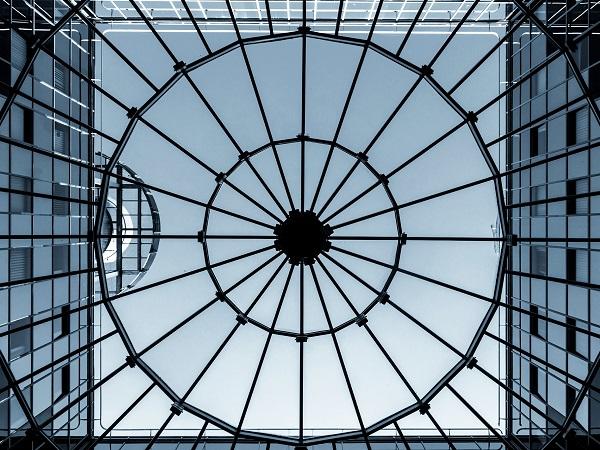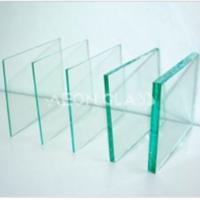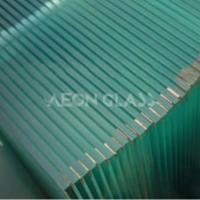
Date: 30 March 2022
Achieving the target on CO2 emission reduction of at least 55% by 2030 as proposed by the European Commission[1], will require drastic cuts in buildings’ energy consumption and related emissions. The flat glass sector will play a key role in reaching a zero-emission building stock: up to 37% of the total buildings’ energy consumption can be saved in 2050 thanks to high-performance glazing products[2].
The Energy Performance of Buildings Directive (EPBD) needs a thorough and coherent revision to support the EU’s climate-neutrality objective and realize the full potential of glazing in buildings.
The proposal for a recast of the EPBD presented by the European Commission[3] has the merits of translating the Renovation Wave pledges in operation policy measures and objectives. While the proposal is future-proof and in line with carbon reduction targets when it comes to the provisions for new buildings, more substance and provisions are needed in the renovation segment. To massively scale-up renovation, the EPBD should demand Member States to build capacity on the ground. The risk is otherwise high that buildings renovation rate remains too low and that, when renovations take place, sub-optimal energy-performance levels are delivered.

Policy recommendations
- High-level of ambition in building renovation requires actions on the ground. The EPBD should include measures for building capacity of local administrators, supporting jobs creation and upskilling of workers in the construction sector, and facilitating the access to building permits.
- National building renovation plans should include mandatory minimum annual renovation rate of at least 3% per year and include plans for the phasing-out of inefficient building components such as single glazing and early uncoated double glazing.
- Minimum energy performance standards should be aligned to higher performance standards and anchored to the Energy Efficiency First principle. They should encourage deep renovation to ensure long-lasting CO2 and energy savings and prevent works carried with minimal energy-efficiency considerations.
The Energy Performance of Buildings – EPBD recast
1. Increasing the rate and depth of renovation
Triggering a massive wave of renovation of buildings and sustaining it over the long-term, requires a mix of policy instruments ranging from regulations, renovation incentives, and new financial models. Against this background, Glass for Europe believes that the European Commission proposal goes in the right direction.
Art. 2 Definitions
- Zero-emissions building – Glass for Europe welcomes the application of the Energy Efficiency first principle in the definition of zero-emissions building. The ZEB definition should be expressed in both primary and final energy consumption to prioritize the minimizing of the operational GHG emissions first.
- Whole life-cycle greenhouse gas emissions – Glass for Europe supports the aspiration and proposed provision and invites the European Commission to introduce a harmonized EU methodology to assess the whole life-cycle carbon emissions of buildings.
- Healthy Indoor Climate – Glass for Europe supports the introduction of a new definition of a Healthy Indoor Climate. The definition should include among other parameters a daylight factor. Glazing technology such as solar control glass allows access to natural daylight during all seasons, including the cooling one when it minimises heat gains.
Art. 9 Minimum energy performance standards (MEPS)
Glass for Europe welcomes the introduction of Minimum energy performance standards as a way for increasing the renovation rate in the European Union. MEPS should be aligned to higher performance standards and anchored to the Energy Efficiency First principle. They should target deep renovations to ensure long-lasting CO2 and energy savings and prevent that works are carried with minimal energy-efficiency considerations.
- With the highest renovation potential predominantly lying in the worst performing segment of the building stock, during the first years of implementation, Glass for Europe proposes that MEPS are used to trigger energy efficiency improvement of at least 2 classes and that no derogation are foreseen in the residential sector:
- public and non-residential buildings in class G will have to be renovated to at least class E by 2027 and at least class D by 2030
- residential buildings in class G class must achieve the same levels by 2027 and 2030 respectively.
- MEPS should not limit their provisions to the simple application of the minimum energy performance requirement for building elements. It risks incentivising the installation of suboptimal products as minimum performance requirements are sometimes very low performance products. Glass for Europe suggests that MEPS are linked to the installation of high-performance products.
2. Paving the pathway for the renovation wave
The introduction of targets for renovation coupled with improved financing tools will build and maintain investors trust while boosting actions on the ground. However, increasing renovation without raising the energy performance of the building stock will fail to deliver the expected buildings contribution to the 2030 EU goals. While mandatory renovation can be designed for the public sector, different instruments must be considered to activate larger market segments, such as renovation of private dwellings.
Art. 3 National building renovation plans + Annex II
Glass for Europe welcomes the turning of the current Long Term Renovation Strategies into the more operational National Building Renovation plans. The BRPs will allow a better harmonisation and monitoring of energy efficiency and CO2 reduction progress in the building sector. They nevertheless require additions to also serve as a catalyst for investment in energy-efficient renovations and in particular, Glass for Europe proposes the following.
- National building renovation plans should include mandatory minimum annual renovation rate of at least 3% per year for the transformation of the national building stock to ZEB level by 2050.
- National Building Renovation plans should include plans for the phasing-out of inefficient building components such as single glazing and early uncoated double glazing. Incentives to building component replacement, such as windows, should be conditional to a high-performance standard and proportional to the level of performance. The latter is important to avoid market lock-in at the lowest level necessary for the incentive to be granted.
- The template proposed in Annex II should be improved:
- Member States should be asked to include the minimum energy performance requirements for buildings elements (i.e. windows) in the overview of the national building stock.
- The European Commission should provide guidelines to Member States to accelerate the implementation of the revised EPBD. In addition, the EC should consider capacity building programs to upskill the workforce and the local administrators, to increase energy renovations and facilitate access to financing respectively.
3. Empowering Member States and citizens with the right tools
Glass for Europe welcomes the introduction of the building renovation passport as a tool to boost energy renovation and support consumers choices toward energy efficient products such as high-performance glazing.
Art. 10 Building Renovation Passport
- Building Renovation Passports are a complementary tool of the Minimum Energy Performance Standards. When a renovation is undertaken to comply with the MEPS obligation, it should automatically trigger the establishing of a Building Renovation Passport outlining the next renovation steps needed to achieve the A energy class.
- The renovation roadmap indicating a sequence of renovation steps should follow the Energy Efficiency First principle and prioritize the reduction of energy needs first. To that end, Glass for Europe proposes that measures aiming at an increased performance of the building envelope are systematically prioritised in the renovation roadmap.
- The Building Renovation Passport should include an assessment of access to daylight, among the wider benefits related to health and comfort.
- The Building Renovation Passports should be compatible with Energy Performance Certificates.
4. Assessing glazing energy performance by way of the energy balance
Glass for Europe regrets the lack of focus on the necessary improvements of the national methodologies defining the minimum energy performance requirements of transparent components of the building envelope. Glass for Europe calls on the Parliament and the Council to amend the European Commission proposal to ensure a proper assessment of glazing in the EPBD framework.
Art. 5 Setting of minimum energy performance requirements
- Member state shall be asked to set minimum energy performance requirement for transparent component of the building envelop by applying the energy balance approach[4]. This will ensure a better assessment of the contribution of windows and glazed façade to the overall energy efficiency of the building and avoid the uptake of suboptimal solutions.
- Glass for Europe welcomes the proposal to adapt the exemption of protected buildings to technical progress allowing improving the energy performance without altering technical character and appearance. Today, numerous high-performance glazing solutions increse the energy performance of historical buildings with a zero or minimum impact on their appearance.
5. Delivering a healthier indoor environment
While improving the energy performance of buildings should remain the main the focus of the EPBD, the wider benefits brought by energy efficient renovations should also be considered.
Art 7 New buildings and Art 8 Existing buildings
- In article 7, Member States are invited to address, in relation to new buildings, the issue of healthy indoor climate conditions among other aspects. Glass for Europe calls for access to natural daylight[5] to be included in this list of critical elements to consider.
- Article 8 on existing buildings should include the same provision than article 7, including considerations on access to natural daylight when it comes to items that Member States are invited to address as part of their efforts to achieve a zero-emission building stock by 2050.
***
[2] Potential impact of high-performance glazing on energy and CO2 savings in Europe, TNO, 2019.
[3] Directive of the European Parliament and of the Council on the energy performance of buildings (recast), COM(2021) 802 final,
[4] Ensuring a proper assessment of the energy performance of windows when implementing the revised EPBD (https://glassforeurope.com/energy-balance-the-right-approach-to-assess-the-energy-performance-of-window-products/)
[5] Daylight and glazing requirements in new constructions https://glassforeurope.com/daylight-and-glazing-requirements-in-new-construction/
 600450
600450


















Add new comment